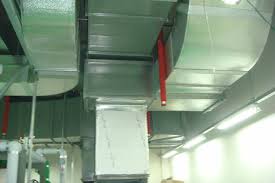
With all the buzz about energy efficiency in Heating, Ventilating and Air Conditioning (HVAC) systems these days, many homeowners who haven’t upgraded their systems are starting to feel left behind. The quest for lower energy bills and increased home comfort is driving many to ditch their old, outdated furnaces, heat pumps, and air conditioners in favor of those offering a greater return on the investment. Moreover, one way that homeowners are managing to save money on their utility bills is by switching energy providers. For example, by researching a few different light companies in texas or wherever you might live, it is possible to find a more affordable energy package at the click of a button. So, whether you want to save money on your lighting, or your HVAC system, there are lots of steps that you can take to bring the price of your bills down.
Use Thermal Imaging
This might not sound like an HVAC upgrade, but thermal imaging is one of the best technologies available for discovering leaks in HVAC systems. Correction of existing leaks can amount to a very significant upgrade to any heating or cooling system. The dual-image systems are especially capable, as they capture data from the visible spectrum of light and combine it with infrared images to better analyze and identify potential problems. By detecting differences in surface temperature on various objects and presenting them as patterns on a high resolution screen, problem spots like leakages can be located and then corrected.
High Efficiency Heat Pumps
One of the differences between standard heat pumps and high efficiency heat pumps is the configuration of the compressor. The standard heat pump can only operate at full capacity, whereas the dual-speed compressor allows a high-efficiency heat pump to operate at or near the heating or cooling capacity needed at the moment.
Another advance in heat pump technology is the desuperheater, which is used to recover energy from exhausted air and use that energy to heat or cool water. A heat pump with one of these attached can heat up water as much as 3 times more efficiently than an ordinary water heater. Even a finely tuned heat pump cannot match the efficiency of these heat pump advances.
One last improvement in heat pump technology is the scroll compressor, which can replace the standard piston compressor. The advance offered by the scroll compressor is that it runs quieter and has a considerably longer operating life than its predecessor.
Variable Speed ECM Motors
An electronically commutated motor (ECM) is a high efficiency motor that reduces the total energy consumption for an HVAC appliance by consuming less energy itself. It is called a variable speed motor because it actually changes the RPM of the motor in response to changing conditions in the HVAC system. An ECM motor is better equipped to maintain proper air flow in an HVAC system, which draws the maximum efficiency from an air conditioner, heat pump, or furnace.
High Efficiency Furnaces
The newest high efficiency condensing furnaces are capable of achieving an astonishing 98% AFUE rating. AFUE stands for the Annual Fuel Utilization Ratio, and it represents a comparison of the total fuel entering the furnace and the total fuel being converted to heat. Needless to say, 98% is a very efficient conversion of fuel to heat energy.
The big differences between a conventional furnace and a condensing furnace lies in the heat exchanger technology which is used to draw heat from combustion, and in the process used to exhaust the gases resulting from combustion. Where the condensing furnace really excels is in the post-combustion process, where it performs highly efficient heat extraction. While a conventional furnace exhausts its combustion gases very quickly, a condensing furnace will accomplish this extraction much more slowly, extracting all possible re-usable energy in the process.
These are just some of the ways to upgrade an HVAC system. New technologies are being invented all the time, and innovative new upgrades are sure to be on their way in the coming years. For now, though, these four ways are some of the best to upgrade the home’s HVAC system.





